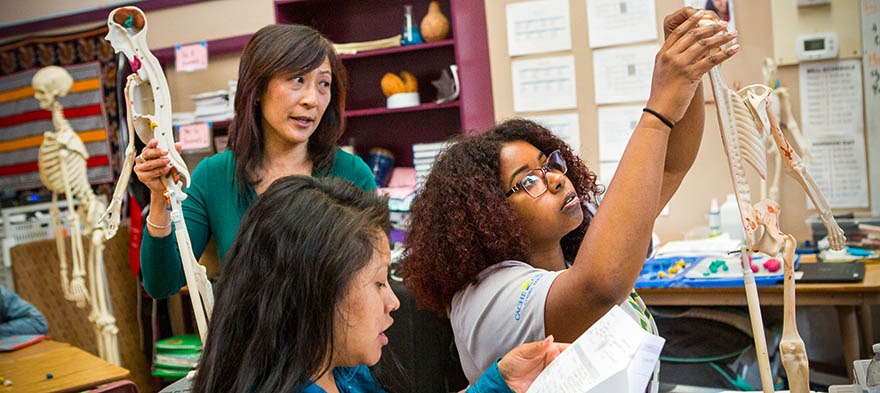
It is a small high school in the middle-class community of west suburban Norridge, where 87 percent of the students are White and only 4 percent are from low-income families. The student body is stable and deeply connected to the school—almost 94 percent graduate, less than 1 percent are chronically truant, only about 8 percent move in and out of the district in a given school year, and nearly all of Ridgewood's 850 students participate in some extracurricular activity. The one-school district is blessed with a thriving commercial tax base and spends a healthy $10,830 per student, which translates into small class sizes and loyal teachers. …Yet the scores at Ridgewood are disappointing—only 48 percent of students met or exceeded state standards on all tests this year. Composite scores on the ACT are not too impressive either—19.5, compared with the state average of 19.9. An analysis of the local middle school scores from 1999 suggests students are losing ground after arriving at Ridgewood—especially in reading. More than 80 percent of eighth graders taking the ISATs at Ridgewood's three feeder schools met or exceeded state standards in reading and writing…When that same group of students took the state tests this spring as 11th-graders at Ridgewood, only 50 percent passed the reading test…The school leaders took some of the heat—they were slow to teach problem solving and adapt to advancements in curriculum. But they mostly pointed the finger at parents with their “blue-collar sensibility that values work over elite college admissions” and students who “either don't have time or are not motivated to enroll in the rigorous college-preparatory classes.” At the time, the superintendent outlined a series of classroom reforms to meet the escalating demands of NCLB. "We're changing to meet these new expectations," he said. So 15 years later, how did these promised changes improve the school? Turns out, not so much. The school spends a lot more than it did 15 years ago—per-pupil costs now top $20,000—and the number of low-income students have climbed to 32 percent. But now only 36 percent of 11th graders tested as proficient. The school’s score on the mandated SATs averaged 1018 (for combined reading and math), about a few points better than the state’s average of 1016. Some 93 percent of students graduated in four years, but of those, 41 percent attended community college and two-thirds of those students needed college remediation. So there you go. A whole generation of students stagnating in one high-spending school, buried under excuses and lost in a sea of empty promises. If this is what happens under the bright glare of accountability, what do we think will happen when no one is watching?
Tracy Dell’Angela is a writer, education nonprofit executive director and a mom passionate about education improvements. Previously, Tracy was Director of Outreach and Communications for the Institute of Education Sciences (IES) at the U.S. Department of Education in Washington, D.C. She came to IES from the University of Chicago Consortium on Chicago School Research, which produces research that drives improvement in Chicago and nationwide. She also served as Senior Project Director for 100Kin10 at the University of Chicago and was Director of Program Investments and Partnerships for the Chicago Public Education Fund. Tracy spent most of her career as an award-winning newspaper journalist, including 12 years at the Chicago Tribune as an education reporter covering national policy and the Chicago Public Schools. A Californian by birth but a Chicagoan in spirit, Tracy attended University of Chicago as a master's student in social sciences and earned a B.A. in journalism and political science from San Diego State University.
If you have a child with disabilities, you’re not alone: According to the latest data, over 7 million American schoolchildren — 14% of all students ages 3-21 — are classified as eligible for special...
The fight for educational equity has never been just about schools. The real North Star for this work is providing opportunities for each child to thrive into adulthood. This means that our advocacy...
The story you tell yourself about your own math ability tends to become true. This isn’t some Oprah aphorism about attracting what you want from the universe. Well, I guess it kind of is, but...
Your donations support the voices who challenge decision makers to provide the learning opportunities all children need to thrive.
Ed Post is the flagship website platform of brightbeam, a 501(c3) network of education activists and influencers demanding a better education and a brighter future for every child.
© 2020–2024 brightbeam. All rights reserved.